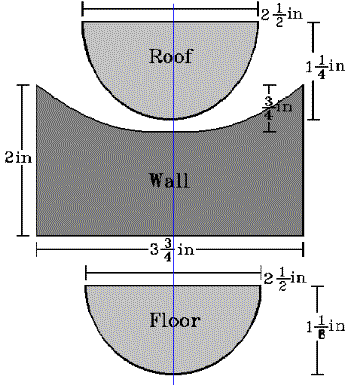| Raingutter Boat Racing - |
How To Make A Fast Regatta Boat |
Jigging the Rigging
Your sail converts your breath into the forward force that propels your
boat. All forces act through the balance point (center of mass). So, if you
blow high on the sail, the nose (bow) of the boat dips down. Blowing low
causes the bow to pitch up. If you blow on a line passing through the
center of mass, the boat is free to determine its own pitch to optimize
speed.
It is best to place the sail low and as far back as possible.
The sail must "trap" all the air it can. It must not let air escape. Cloth has tiny holes in its weave, unless it has been coated with plastic, but then it is heavy! Foam, thin, painted card stock, transparency film or other plastics work better.
What is the best sail shape? The answer is a rounded "w"-shape. Breath hits the middle divider directing it to the sides and out along the side edges. This type of sail reduces energy lost to turbulence. One must blow very straight into this type of sail. Otherwise, the center divider acts like a rudder and results in turning (if vertical) or tipping (if horizontal)! A non-rounded one can be made just by bending two pieces of cardstock or plastic against eachother or folded in the middle.
For a Parabolic sail, the energy loss due to turbulence is probably not great but it won't cause as much snaking down the raingutter. It can be made by bending a piece of cardstock or plastic to shape.
Simple Sails
Put it on the rear of your deck or bury it in the rear of the hull almost to the water line if you can.
| Raingutter Boat Racing - |
How To Make A Fast Regatta Boat |
| Copyright © 1997, 2000, 2001, 2004 by Michael Lastufka, All rights reserved worldwide. |
